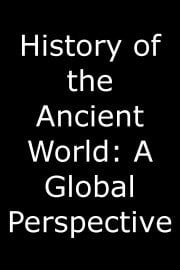
Ep 3. Cultures of the Ancient Near East
- TV-PG
- December 16, 2011
- 29 min
In episode 3 of History of the Ancient World: A Global Perspective, titled "Cultures of the Ancient Near East," the focus is on the civilizations that emerged in the Near East, an area that encompasses modern-day Iran, Iraq, Syria, Lebanon, Israel, Jordan, and parts of Turkey and Egypt. This period of history is often referred to as the cradle of civilization, and it's easy to see why.
The episode begins by examining the Sumerians, the first known civilization in the region. Sumer was located in what is now Iraq, and the Sumerians are credited with developing the first system of writing, as well as creating some of the first cities. The episode explains that the Sumerians believed that their cities were built by gods, and that these gods continued to live in the cities even after they were abandoned. The episode also explores some of the Sumerian myths and legends, such as the story of the goddess Inanna's descent into the underworld.
Next, the episode moves on to the Babylonians, a civilization that emerged after the fall of the Sumerian empire. The Babylonians are perhaps most famous for their law code, the Code of Hammurabi, which is often cited as one of the first examples of written law. The episode explores some of the more interesting laws in the code, such as the one that stated that if a doctor made a mistake during surgery and the patient died, the doctor's hands would be cut off. The episode also looks at the Babylonians' religion, which included many gods and goddesses, and the construction of the famous Hanging Gardens.
The third civilization explored in the episode is the Assyrians. The Assyrians were known for their military prowess and their use of terror as a tool of war. The episode describes some of the brutal tactics employed by the Assyrian army, such as impaling their enemies on stakes. However, the episode also notes that the Assyrians were great builders and engineers, and that they constructed many magnificent palaces and temples.
The episode then shifts its focus to Persia, which emerged as a dominant power in the Near East in the 6th century BCE. The episode explores the reign of Cyrus the Great, who is credited with building the largest empire the world had seen up to that point. The episode also looks at the Persian religion, which featured a dualistic view of the world and the belief that the universe was governed by a divine force known as Ahura Mazda.
Finally, the episode examines the impact that these ancient Near Eastern civilizations had on the world. The episode notes that many of our modern ideas about government, law, and religion have their roots in ancient Near Eastern cultures. The episode also explores some of the stories and myths that have endured since ancient times, such as the story of the flood, which appears in both Sumerian and Babylonian literature.
Overall, "Cultures of the Ancient Near East" provides a fascinating look at some of the most influential civilizations in history. From the Sumerians to the Persians, these cultures laid the foundation for much of the world that we know today. Whether you're a history buff or simply curious about the world around you, this episode is sure to captivate and educate.
